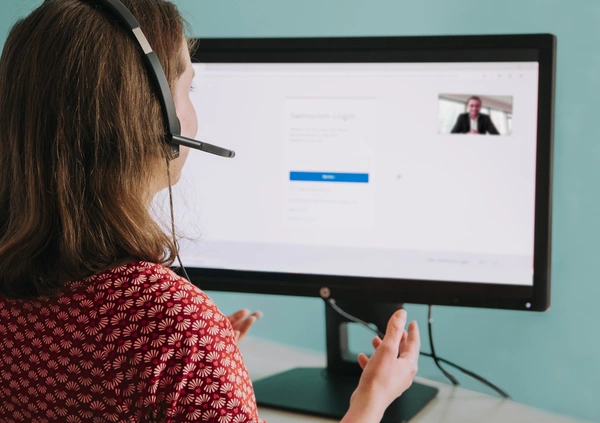Usability testing in the lab is a proven method in the field of UX research (also user research). The aim is to evaluate the usability and user experience of a product, website or application. In this method, test participants are invited to perform pre-set tasks in a laboratory environment. Meanwhile, their interactions and reactions are observed, recorded and analyzed.

In a usability test, websites, devices, operating instructions, and in general everything that is to be operated or understood by humans is tested with real users. The results are concrete, actionable suggestions for improvement.

The procedure for a usability test in the laboratory usually includes the following steps:
Definition of objectives and test criteria: First, clear goals are defined that are to be achieved during the test. In the process, the relevant criteria for evaluating usability are also defined, such as efficiency, learnability, freedom from errors, and satisfaction.
Selection of test subjects: Representative users from the target audience are selected to test the site or product so that the test results are meaningful and applicable to actual users.
Development of test tasks and scenarios: Realistic tasks and scenarios are created that represent typical usage scenarios and allow test subjects to evaluate the product or website for usability.
Execution of the test: The test subjects come individually to a laboratory room and perform the defined tasks and scenarios under observation. Screen recordings, eye-tracking or video recordings capture the interactions with the product.
Observation and data collection: Observations are made during the test, thereby collecting relevant data on the test subjects' behavior, reactions, errors and difficulties.
Analysis and evaluation of results: The data collected during the usability test is analyzed and evaluated. This provides insights into usability and potential areas for improvement. Qualitative and quantitative analysis methods can be used.
The special features of usability testing in the laboratory include:
Controlled environment: Conducting the test in a laboratory environment leads to particularly good comparable results, because it minimizes external disturbances and standardizes the test conditions.
Real-time observation: During the test, there is the possibility to directly observe the test subjects. This makes it possible to directly capture their behavior, reactions and difficulties.
In-depth insights: Usability testing in the laboratory provides detailed insights into the actual use of the product, as the test subjects engage intensively and undisturbed with the test object. As a result, such tests make it possible to identify concrete potential for improvement.
Validity and reliability: The control of the test conditions and the use of standardized protocols ensure high validity and reliability of the results.
The advantages and benefits of usability testing in the lab are:
Identification of problem areas: Direct observation of test subjects allows usability weaknesses to be identified and targeted for improvement.
Optimization of user experience: Usability testing in the lab enables targeted improvement of a product's usability and ensures a positive user experience.
Validation of design decisions: Testing prototypes or new features in the lab validates design decisions and also verifies their effectiveness.
Improving customer satisfaction: Optimizing usability and user experience increases customer satisfaction and strengthens their loyalty to the product or brand.
DIN EN ISO 9241-210:2020-03, Ergonomie der Mensch-System-Interaktion — Teil 210: Menschzentrierte Gestaltung interaktiver Systeme (ISO 9241-210:2019); Deutsche Fassung EN ISO 9241-210:2019
Rubin, J., Chisnell, D. (2008). Handbook of Usability Testing: How to Plan, Design, and Conduct Effective Tests. Wiley.